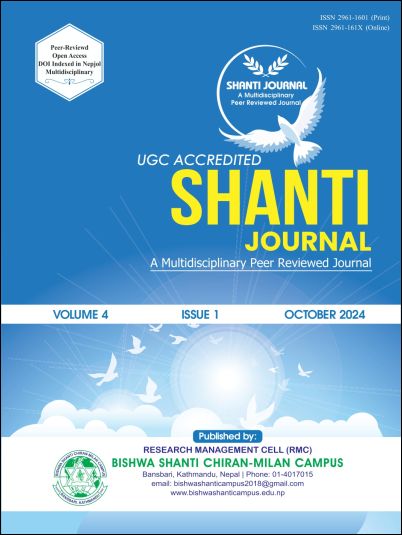A Catholic Perspective on Interreligious Peacebuilding in the Himalaya
DOI:
https://doi.org/10.3126/shantij.v4i1.70511Keywords:
Peacebuilding,, Interreligious, Relations, Catholic Social Teaching, JusticAbstract
Armed conflict, economic poverty, human trafficking, and gender discrimination are among the problems that most impact vulnerable women in the Himalaya. These challenges, common to the rest of South Asia and other parts of the world, are exacerbated by political, social, and cultural norms in mountainous regions that promote violence and facilitate insurgencies. Furthermore, geographic separation and cultural biases contribute to the political and economic marginalization of mountain peoples, which can lead to the belief that violence is the only reasonable option for gaining a voice. Nevertheless, the Himalaya encompasses a variety of vibrant religious traditions that promote peace and justice, of which Catholicism is a small minority. As such, it is crucial for Catholic peace builders to adopt an effective inter religious, intercultural, and cooperative approach for these problems. This project will examine Catholic peace building to identify the reasons, methods, and implications for an inter religious approach in the Himalaya. After summarizing the foundation and principles of Catholic peace building, I will consider the specific challenges in the Himalayan context. Subsequently, I will examine the similarities and differences in Catholic, Hindu, Muslim, and Buddhist understandings of peace.Finally, I will offer an analysis of how Catholic peace building can be most successful in the Himalaya. While the predominant models of Catholic peace building have been successfully implemented in regions that are largely Christian, these approaches can struggle to effectively engage across religious, cultural, and political boundaries. In summary, this essay argues that an inter religious approach is necessary to build peace amid these challenges.
Downloads
Downloads
Published
How to Cite
Issue
Section
License
Copyright (c) 2024 The Author(s)

This work is licensed under a Creative Commons Attribution-NonCommercial 4.0 International License.
This license enables reusers to distribute, remix, adapt, and build upon the material in any medium or format for noncommercial purposes only, and only so long as attribution is given to the creator.




